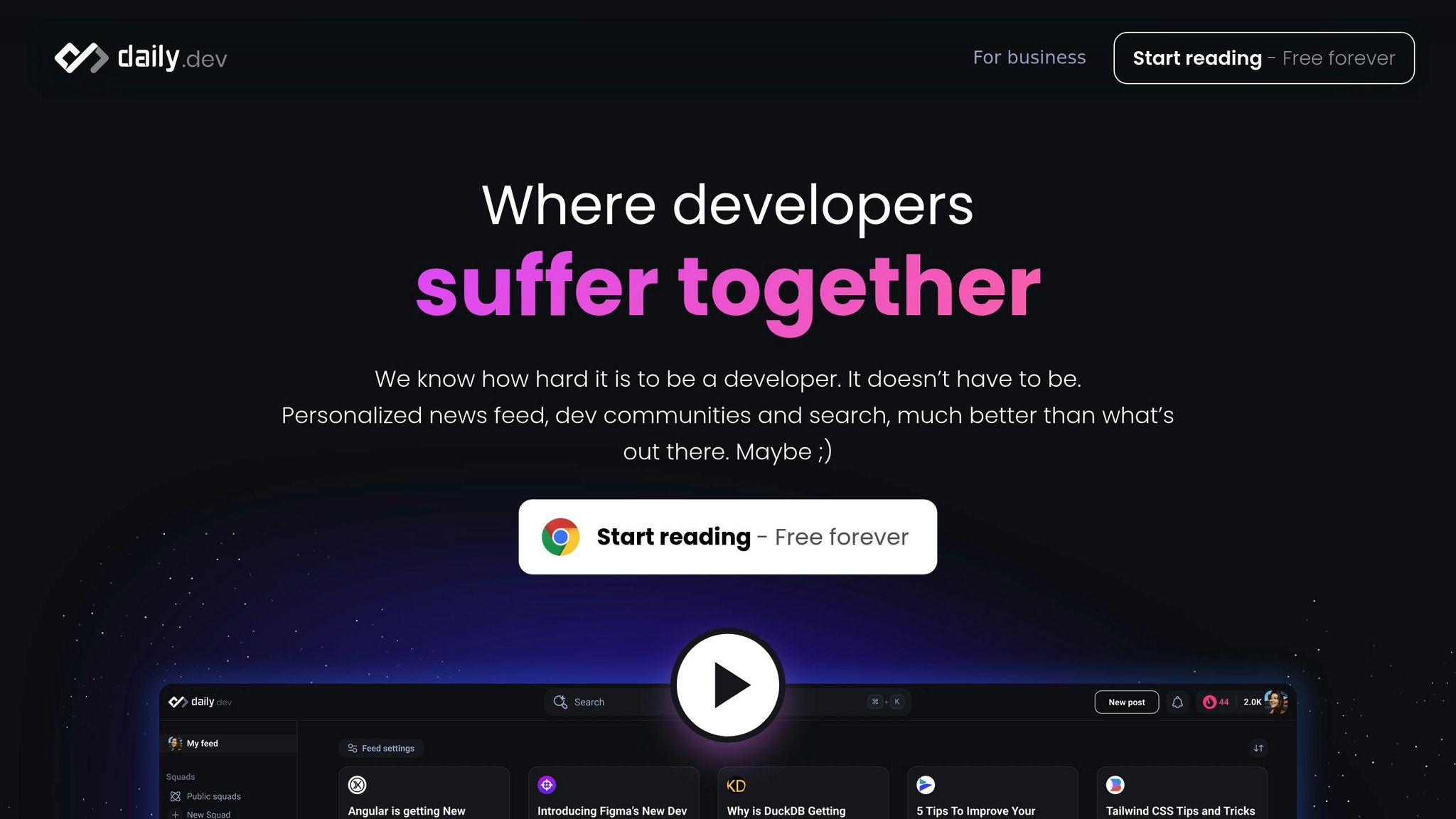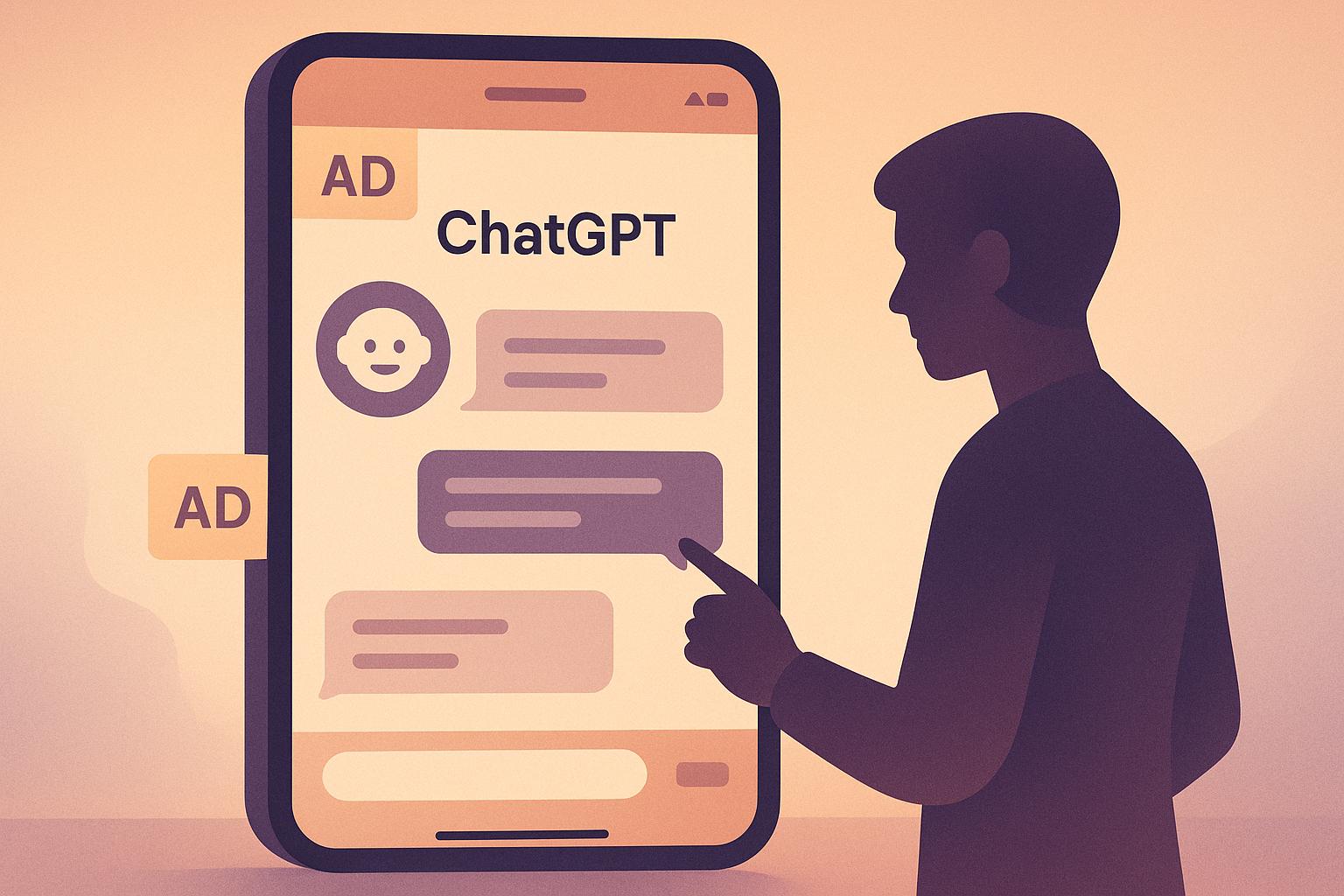


Learn how to create engaging social media content for developers by focusing on trust, technical accuracy, and relevant insights.
Creating social media content for developers requires a completely different approach than marketing to general audiences. Developers value precision, technical accuracy, and practical insights over flashy marketing tactics. Here’s the key takeaway: focus on trust, relevance, and utility.
Key Points:
- Understand Your Audience: Developers differ by roles (e.g., front-end, back-end, DevOps), experience levels, and preferred tools or languages like Python, JavaScript, or Docker.
- Timing Matters: Developers are most engaged on desktop during work hours, not mobile. Post during U.S. business hours for maximum visibility.
- Content Formats That Work: Tutorials, code snippets, Q&A posts, and live coding demos resonate most. Avoid generic or overly promotional content.
- Tone and Style: Use clear, factual, and direct language. Avoid buzzwords and focus on solving real problems.
- Event Alignment: Leverage major tech events like Google I/O or AWS re:Invent to create timely, relevant content.
Pro Tip:
Platforms like daily.dev Ads are designed to target developers effectively by offering granular targeting options (e.g., by programming language, tool usage, or seniority) and placing ads within trusted, technical environments.
Bottom Line: Developers are a discerning audience. Provide useful, accurate, and targeted content to build trust and drive engagement.
How to build a strong social media presence as a developer
Understanding Developer Audiences and Preferences
To create impactful social media content for developers, it’s crucial to understand who they are and what shapes their online behavior. Once you grasp developer behavior, the next step is identifying specific personas to deliver content that resonates.
Identifying Developer Personas
Developers can be grouped by their roles, experience levels, and technical expertise. Common roles include Front-End Developers, Back-End Developers, DevOps Engineers, Data Scientists, AI Engineers, Cloud Architects, CTOs, and Tech Leads. Each group brings unique needs and interests to the table.
Programming language preferences also play a major role. A developer working with JavaScript will likely face different challenges than someone using Python, Java, Go, or Swift. Similarly, developers using tools like Docker, Kubernetes, Jenkins, Jupyter Notebook, or Visual Studio Code often gravitate toward content that aligns with their workflows and problem-solving needs.
Experience level adds another layer. Aspiring and junior developers typically look for tutorials and beginner-friendly resources, while mid-level and senior engineers prefer advanced discussions, technical deep dives, and performance optimization tips. Tailoring content to these varying needs ensures relevance across the spectrum.
Analyzing Platform and Format Preferences
Knowing where developers spend their time online and how they consume content is key to crafting an effective strategy. Developers often engage on desktop during work hours, a prime time for reaching them. Nimrod Kramer from daily.dev highlights this dynamic:
"The ideal platform reaches developers when they're in discovery mode - on desktop, during work hours, with hyper-targeted, relevant ads. That's exactly what daily.dev offers."
This desktop-first behavior during work hours creates a window to connect with developers when they’re actively exploring new tools or information.
Content formats also matter. Developers gravitate toward personalized news feeds, community discussions, and interactive learning resources. Platforms that encourage collaboration, sharing, and community-driven content foster trust and engagement. Developers appreciate environments where they can learn and exchange ideas without being overwhelmed by promotional material.
Considering US-Specific Developer Habits
For US-based developers, work patterns and cultural nuances significantly shape content engagement. Posting during US business hours ensures you’re reaching developers when they’re most active. Hyper-local targeting can further refine your approach.
Cultural touchpoints also play a role. Major tech events like SXSW, Google I/O, and AWS re:Invent are highly relevant to US developers. These events present opportunities to align your content with the trends and topics capturing their attention. By blending technical precision with awareness of these cultural markers, you can create content that connects on a deeper level.
Creating Content That Connects with Developers
To truly engage with developers, your content needs to resonate with their mindset and communication style. Developers value substance over flash and are quick to dismiss anything that feels shallow or inaccurate.
Focusing on Accuracy and Technical Precision
Accuracy is the cornerstone of earning developers' trust. They can spot errors, outdated details, or oversimplifications quickly - and when they do, they often disengage for good.
"Developer trust is everything" - daily.dev for Business
When discussing programming languages, frameworks, or tools, be precise. Specify versions and contexts - like whether you're talking about ES6, Node.js, or browser-based JavaScript. Avoid sweeping generalizations that may not apply to specific scenarios. This level of detail shows you respect their expertise.
Double-check your facts. Use official documentation, cite credible sources, and be upfront about any limitations or areas where information might change over time. Developers value transparency, especially when it comes to edge cases or potential pitfalls. Every example you include should work as intended, and every explanation should be technically sound.
Presenting accurate content also means using formats that align with how developers prefer to learn and solve problems.
Using Developer-Friendly Formats
Developers consume content differently from other audiences. They prefer formats that are structured and easy to scan, allowing them to find what they need quickly. Tutorials, code snippets, and step-by-step guides are particularly effective because they offer immediate, practical help.
Interactive formats are especially engaging. Live coding demos, debugging sessions, and real-time problem-solving mimic the challenges developers face daily. For example, a screen recording showing terminal commands or an IDE workflow often outshines a polished marketing video.
Q&A formats are another strong choice, especially on social media. Developers frequently encounter similar challenges, so addressing common issues - like "How to optimize React component re-renders" - can create highly shareable content.
Documentation-style pieces also resonate well. Developers are used to clear explanations with code examples, expected outputs, and troubleshooting tips. This familiar structure makes your content feel approachable and useful.
Consider creating resources that developers will return to over time. Cheat sheets, command references, and configuration templates are frequently bookmarked and shared, extending the life and reach of your content.
Once you've nailed the format, it's time to focus on the tone.
Adopting a Developer-Centric Tone and Style
The tone of your content should feel authentic and direct. Developers appreciate clarity and precision, and traditional marketing language often falls flat. Instead of trying to sell, aim to teach and inform.
"Developer marketing is anything but marketing" - daily.dev for Business
Write as though you're explaining something to a trusted colleague. Use active voice, real-world examples, and straightforward explanations. Avoid buzzwords like "revolutionary" or "game-changing" unless you can back them up with hard evidence.
Technical jargon is not only acceptable but often preferred - just make sure you're using it correctly. Developers appreciate accurate terminology and dislike unnecessary simplifications.
Humor can also help, but it needs to feel natural. References to debugging struggles, programming memes, or shared frustrations can create a connection. However, forced or outdated jokes can alienate your audience instead.
Finally, be honest. Acknowledge limitations, trade-offs, and potential challenges. Developers respect balanced perspectives that consider both pros and cons, and this honesty builds credibility.
To ensure your content connects effectively, structure it with clear headings, logical progression, and language that's easy to understand - whether it's read by a developer or processed by an AI tool. This approach fosters long-term engagement and trust, which are essential for building meaningful relationships with developer audiences.
Planning and Scheduling for Maximum Impact
When it comes to connecting with developers, timing is just as crucial as the content itself. Developers aren’t like typical audiences who browse during commutes or coffee breaks. Instead, they’re often on the lookout for tools and insights while actively working. As Nimrod Kramer puts it:
"The ideal platform reaches developers when they're in discovery mode - on desktop, during work hours, with hyper-targeted, relevant ads. That's exactly what daily.dev offers."
By understanding this discovery-driven behavior, you can shape your content calendar and scheduling strategy to meet developers where - and when - they are most engaged.
Creating a Content Calendar
To maximize engagement, align your content schedule with standard US business hours. This ensures your posts hit developers’ feeds when they’re most likely to be in a work mindset.
For a country as large as the United States, geographic targeting is essential. For instance, posting at 10:00 AM Eastern Time ensures your content also reaches West Coast developers during their early morning hours. Tools like daily.dev Ads make it easier to fine-tune geographic targeting, delivering your message to the right audience at the right time.
It’s also smart to allow some flexibility in your calendar. This way, you can quickly adapt to trending topics or breaking news in the developer world. Being timely and relevant can make all the difference in capturing attention.
Timing Posts Around Developer Events
Developer events are golden opportunities to boost your content’s visibility and relevance. These events generate buzz both before and after they happen, giving you an extended window to strategically share your content.
Big-name conferences like Google I/O (May), Apple's WWDC (June), Microsoft Build (May), and AWS re:Invent (November/December) are prime examples. Planning your content a few weeks in advance allows you to create guides, previews, or background information that set the stage for these events.
During the events, focus on delivering real-time updates and concise summaries. For instance, posting quick takes on announcements or key insights ensures your content reaches developers when they’re actively seeking information.
Don’t overlook local meetups, hackathons, or workshops in tech hubs like San Francisco, Seattle, New York, and Austin. These smaller gatherings foster tight-knit, highly engaged communities. Sharing content tied to these events can spark conversations and even drive word-of-mouth buzz.
Platforms like daily.dev Ads are particularly effective for event-related campaigns. Whether you’re promoting event sign-ups or launching a new product, their precision targeting helps you connect with developers who are exploring the latest technologies.
Lastly, track your content’s performance around these events. Some communities respond more to pre-event previews, while others prefer post-event breakdowns or tutorials. Use this data to fine-tune your strategy and keep improving with each event.
sbb-itb-e54ba74
Measuring Success and Improving Your Strategy
Creating content that connects with your audience is just the first step. To truly make an impact, you need to measure how well it performs and use that data to fine-tune your approach. Developer content only matters when it’s tracked and adjusted based on clear insights. Since developers interact with content differently than other audiences, it’s essential to use metrics that reflect their unique behaviors.
Tracking Engagement and Feedback
Your tracking efforts should align with your business objectives. For example, if your goal is product adoption, focus on metrics like sign-ups, downloads, and usage rates instead of vanity metrics like likes or shares.
For brand awareness campaigns, keep an eye on impressions, reach, and visibility within developer communities. If you’re promoting events, it’s not just about registrations - actual attendance is key to understanding whether you’re reaching the right audience. For lead generation, prioritize tracking qualified leads, especially those from developers and decision-makers who are likely to act on your content.
Pay attention to click-through rates on critical pages. When launching a new product, monitor early adoption and how users interact with your tools or services. Platforms like daily.dev Ads provide real-time tracking, allowing you to see what’s working (or not) and make quick adjustments as needed.
Analyzing Developer-Specific Metrics
Generic data doesn’t cut it when analyzing developer engagement. Instead, segment your performance data based on factors that actually matter to this audience - like their seniority, preferred programming languages, or go-to tools.
For example, junior developers might gravitate toward tutorials, while senior engineers are more likely to engage with deep technical content. Similarly, a JavaScript developer might be drawn to updates on frontend frameworks, whereas Python developers could prefer resources focused on data science or backend optimization. Developers using tools like Docker, Kubernetes, Jenkins, Visual Studio Code, or Jupyter Notebook each have distinct preferences. By breaking down your data this way, you can figure out which formats and topics resonate most with each group, helping you refine your strategy with precision.
Adjusting Content Based on Data
Data is only useful if it leads to action. Start by identifying which types of content perform best. If a particular topic or format consistently outshines others, it’s worth dedicating more resources to that area.
Just as technical accuracy builds trust, being responsive to data keeps your content relevant. Use real-time tracking and segmented insights to make quick adjustments - whether it’s shifting your focus to a trending topic or posting at times when engagement is highest. Look for patterns in your data, not just in content preferences but also in timing, to maximize your reach.
Pay special attention to the tools your audience uses most. For instance, if Visual Studio Code users are highly active, consider creating more content tailored to that platform, like specific integrations or tips. Similarly, if Jupyter Notebook users are a key part of your community, focus on content that aligns with data science workflows.
Finally, bring in expert analysis to interpret your performance data and uncover new opportunities. Developer interests change quickly, so staying on top of these shifts will help you keep your strategy fresh and effective.
Using daily.dev Ads for Developer-Focused Campaigns

With a foundation in data-driven content strategies, daily.dev Ads takes your reach to the next level. This platform is specifically designed for developers, where 40% of users are power users actively seeking out fresh tools, technologies, and insights. It’s a targeted approach that aligns perfectly with the earlier discussion on crafting precise developer-focused content.
What makes this platform stand out? It connects your campaigns with developers who are already in a discovery mindset, making them more open to engaging with relevant solutions and ideas.
Key Features of daily.dev Ads
daily.dev Ads offers a range of targeting options to ensure your content reaches the right audience:
- Programming Language Targeting: Focus your campaigns on developers working with languages like JavaScript, Python, Java, Swift, or Go.
- Developer Tools: Zero in on users familiar with tools such as Docker, Kubernetes, Jenkins, Jupyter Notebook, or Visual Studio Code.
- Seniority Levels: Tailor your campaigns for specific experience levels, whether it’s entry-level developers or senior engineers.
- Geographic Targeting: Perfect for promoting regional events or opportunities.
The platform uses native ad placements to seamlessly integrate your content into developers’ daily browsing. Ads appear in key spots like personalized feeds (In-Feed Native Ads) or on Post Pages, where developers are already engaged with technical content. Soon, personalized digest ads will offer even more opportunities for visibility.
Additionally, real-time tracking provides instant feedback on your campaign’s performance. This is especially useful for time-sensitive promotions, allowing you to adjust on the fly based on actual metrics.
Getting Better Results with daily.dev
Whether your goal is product adoption, brand awareness, event promotion, or lead generation, daily.dev Ads provides the tools to create tailored campaigns:
- Product Adoption: Promote developer tools, APIs, or cloud services directly to users working with complementary technologies.
- Brand Awareness: Leverage the platform’s trusted environment to engage developers with content that appears alongside high-quality technical resources.
- Event Promotion: Drive attendance for conferences, webinars, or meetups by targeting developers based on their interests and location.
- Lead Generation: Focus on decision-makers like senior engineers or tech leads by tailoring your campaign to their roles and expertise.
The platform offers two main approaches to suit your campaign goals:
- "Book a Meeting": Provides advanced targeting options, including seniority, technologies, programming languages, and geography.
- "Self-Serve": Ideal for broader campaigns aimed at increasing brand awareness.
This flexibility ensures that your advertising strategy aligns with both your goals and budget.
Why daily.dev Ads Works Well for Developer Audiences
Developers can be skeptical of promotional content, but daily.dev Ads overcomes this challenge by operating within a trusted environment. Ads appear alongside high-quality, technical content, increasing credibility and engagement.
The platform prioritizes developer respect and brand safety, ensuring your ads are displayed in a context that aligns with the values of technical audiences who demand relevance and accuracy.
With global reach and precise targeting, you can scale campaigns internationally while maintaining local relevance. Whether you’re a startup targeting JavaScript developers in specific cities or an enterprise promoting cloud services to senior engineers across the globe, the platform’s targeting options cater to both niche and broad strategies.
Conclusion: Building a Developer-First Social Media Strategy
Creating social media content that resonates with developers means rethinking traditional marketing methods. As daily.dev for Business puts it:
The key to success lies in recognizing that developers are often in "discovery mode", actively searching for tools, technologies, and solutions that can enhance their work.
To build an effective strategy, start with a deep understanding of your audience. Developers aren't just another group to market to - they're a community that values technical precision, relevance, and authenticity. Missteps in these areas can quickly lead to disengagement.
Once you understand your audience, focus on delivering content with technical accuracy. Trust is everything. Developers quickly lose interest in content that feels shallow or disconnected from their real-world challenges. Every post, guide, or ad should reflect a clear grasp of their workflows and pain points.
Targeting also plays a crucial role. Instead of casting a wide net, aim for precision. For instance, you can tailor your content to specific programming languages like JavaScript or Python, address developers at different experience levels, or focus on users of particular tools such as Docker or Kubernetes. This approach ensures your message reaches developers when they’re most open to exploring new ideas.
Another critical aspect is integrating your content into developers' natural discovery habits. Instead of interrupting their experience, place your campaigns in environments they already trust - spaces where they’re consuming technical content. This seamless integration fosters engagement and builds credibility.
Finally, measure your success with metrics that matter to your business. Traditional social media metrics like likes and shares may not tell the full story. Instead, track outcomes such as product adoption, qualified leads, event participation, and brand awareness within the developer community. With platforms reaching 1 in 50 developers globally, the potential for meaningful impact is significant when your strategy aligns with their needs.
A developer-first approach isn’t just a tweak to existing marketing - it’s a complete shift that respects the unique mindset of developers and leverages tailored, precise methods to connect with them effectively.
FAQs
How can I create social media content that resonates with different types of developers, like front-end developers or DevOps engineers?
To create social media content that truly connects with different types of developers, start by digging into what makes each group tick - their specific needs, interests, and the challenges they face. For instance, front-end developers might appreciate posts about design tools, frameworks, or the latest in UI/UX trends. On the other hand, DevOps engineers are likely to engage with content focused on automation, cloud infrastructure, or CI/CD pipelines.
Platforms like daily.dev Ads allow you to zero in on developers based on their skillsets, preferred programming languages, and career stages. This kind of precise targeting helps ensure your content reaches the right audience, whether you're promoting tools, events, or resources designed for a particular developer niche. The secret? Personalization. It’s the foundation for sparking engagement and building trust within the developer community.
How can I ensure my social media content for developers is accurate and trustworthy?
To produce content that developers can rely on, prioritize technical accuracy and credible references. Work closely with subject matter experts to ensure every technical detail checks out. Use straightforward, concise language that speaks directly to developers, but don’t shy away from diving into the complexities - they appreciate thoroughness and genuine depth.
Focus your messaging on what matters to developers. Share practical examples, highlight use cases they can relate to, and provide insights they can apply directly to their work. Make sure any visuals, code snippets, or examples are not only relevant but also technically correct. Trust is built over time, so keep a consistent, professional tone and make every piece of content worthwhile.
How can I use major tech events to make my social media content more engaging for developers?
To capture developers' attention on social media, tie your posts to major tech events. These events provide the perfect backdrop to share insights, trends, or updates that developers care about. Show how your tools, resources, or services align with the event's themes or announcements to make your content more relevant and relatable.
If you're looking to expand your reach, platforms like daily.dev Ads can help. They offer a way to connect with a focused developer audience within a trusted environment, ensuring your content gets in front of the right people at the right moment.






